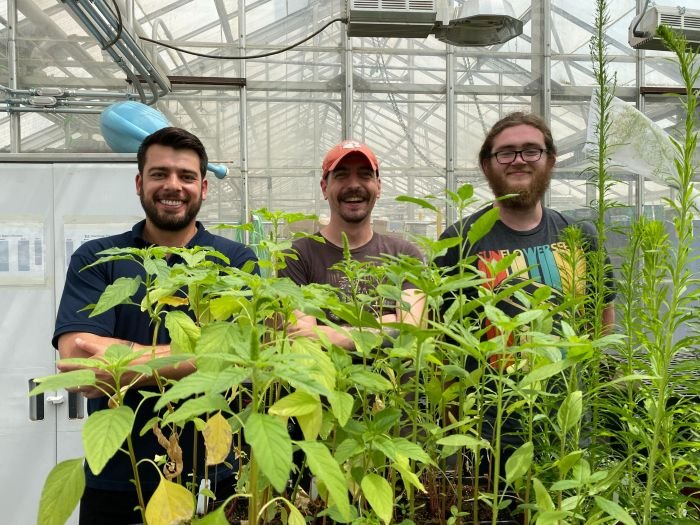By: Dr. Eric Patterson, Michigan State University
Herbicides are a highly effective and selective tool against weeds for farmers. The evolution of herbicide resistance threatens the effectiveness of this tool. Recent examples of new resistance cases in Michigan include 3-way resistance to glyphosate, ALS- and PPO- inhibitors in waterhemp, and ALS-inhibitors in fall panicum. Assessing herbicide resistance can be a time- and space-consuming task for MSU Plant and Pest Diagnostics (PPD). Traditional bioassays require collecting weed seeds, breaking dormancy, growing seedlings in the growth chamber and greenhouse, treating plants with a research sprayer, and ultimately rating the injury observed. This process can take 2-4 months to complete during the winter months, not always allowing results to be available before crop seed purchases need to be made and control programs planned.
The project team is in the pilot phase of researching the feasibility of ‘Leaf Disk Assays’ to determine herbicide resistance levels of various common weed species (Figure 1). This novel method requires only a small plant sample to be tested for herbicide resistance or susceptibility. The project will be deemed a success if the assays reliably and rapidly distinguish resistant from susceptible individuals. The ultimate goal is that these assays will be adopted and used in the MSU Plant and Pest Diagnostics lab to continue to work with and serve the Michigan Corn growers with cutting-edge information about what is in their fields.
When asked about the value of this research, Dr. Eric Patterson said, “by scaling resistance screening from using the whole plant to small tissue disks, we can increase the number of plants that can be processed and decrease the amount of time it takes to get results.” Masters student Juliano Sulzback added, “timing is of major importance to control weed species in the field. This new process and condensed timeline will be helpful to producers in managing resistant weeds.”
To date, five weed species have been tested against glyphosate: giant ragweed, waterhemp, palmer amaranth, marestail, and crabgrass. The Leaf Disk Assays for glyphosate have been optimized for timing, herbicide dose, species, and data analysis. The efficiency on mature versus old tissue in giant ragweed has also been tested. Initial results show that this assay will be viable and most effective on determining resistance in young leaves/seedlings.
Next steps: testing of these same weed species and more against Atrazine, an important herbicide for corn growers. We anticipate excellent results from this as Atrazine directly targets photosynthesis and therefore the chlorophyll fluorescence that ultimately is measured should be heavily affected and easily measured. Atrazine testing will be followed by PPO, HPPD, and Auxinic herbicides that are heavily used in soybean-corn rotations.
Upon completion of this research cycle, data will be analyzed for trends and the results will be published in the CMPM annual research report, which will be released in early 2023.
Weed leaf with tissue disks removed for herbicide resistance testing.
From left to right: Graduate Student, Juliano Sulzback; Assistant Professor, Dr. Eric Patterson; and Undergraduate, Michael Ozolins.








